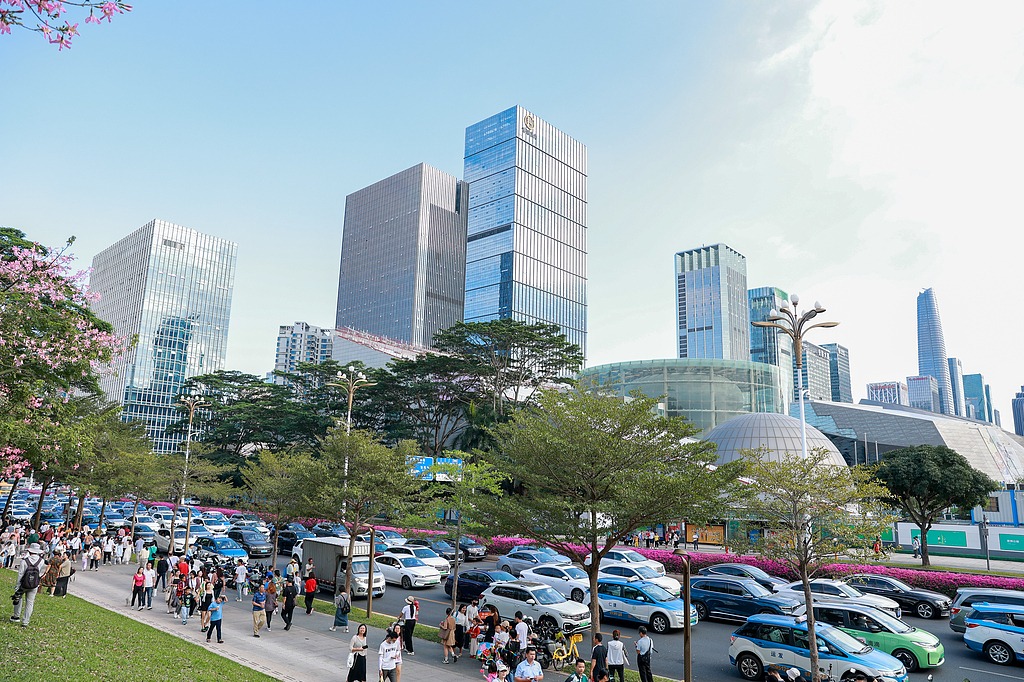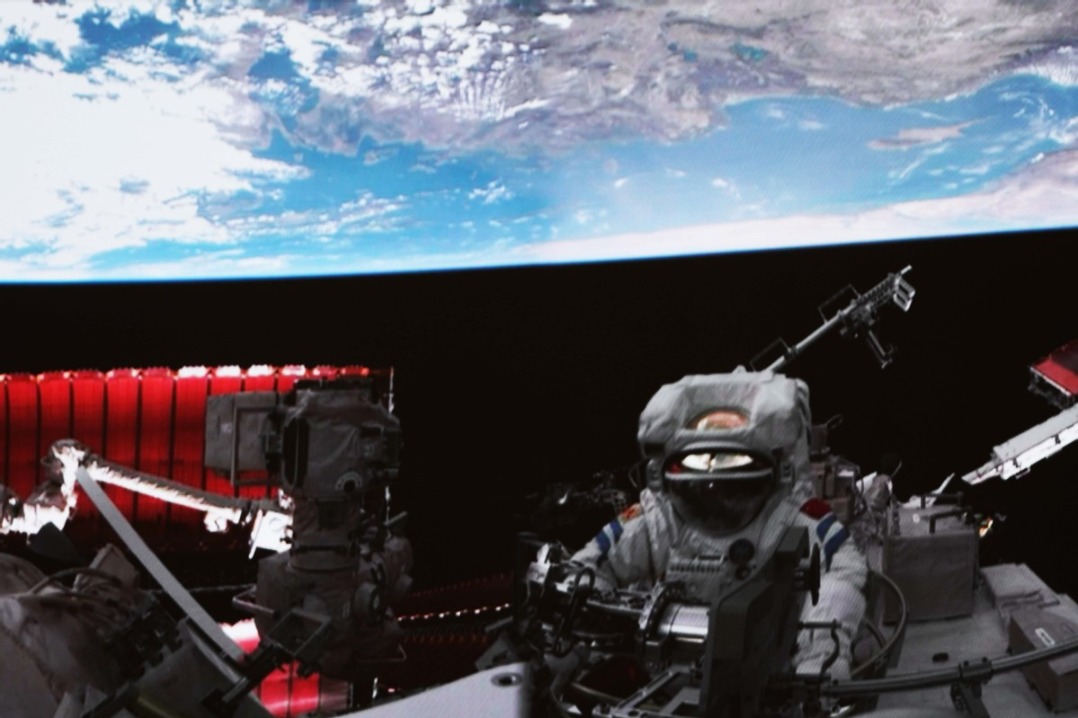In geological park, police officers force to innovate
By Ma Jingna in Lanzhou and Zhou Huiying | chinadaily.com.cn | Updated: 2021-04-27 18:16

As tourists enter Yadan National Geological Park in Dunhuang, Gansu province, most of them are attracted not by the natural formations but by the police station.
Unlike ordinary buildings, the unique station was made by hollowing out a wall of soft stone. It is the only police station in the country to be built in a man-made cave.
Li Shengshou and his colleagues spent 17 years building it starting in May 2001, when the park was being developed.
About 180 kilometers northwest of Dunhuang, the park occupies an area of 400 square kilometers and is the largest yardang landform found so far.
Yardang are unique formations carved from bedrock or formed through erosion. They look like ridges, towers or dunes that protrude from the ground in arid regions.
The park is informally known as Devil City because of the way visitors describe the noise of the strong wind whistling between the yardang. To some, it sounds like a devil screaming.
When Li, the station head, came to the park with four other officers, they had only a 10-square-meter tent in which to live and work. In the summer, temperatures in the region can reach as high as 45 C while in the winter, they can drop to -25 C, usually accompanied by strong winds — up to 88 kilometers per hour.
"Everything in the tent was always covered by sand blown in by the wind," Li said. "The wind often scattered our daily necessities and office supplies everywhere and even turned over the tent."
So they decided to construct a station safe from the elements.
"At that time, there were no roads connecting the park to the outside, so it would be difficult to transport building materials to the park, and it would cost lots of money," he said. "Plus, there was no water or electrical power for construction needs."
After exploring in the park, they chose a stone outcrop and decided to dig a horizontal hole into it.
With the simplest of hand tools, including shovels and pickaxes, they began their project.
They spent almost all of their spare time in the following year excavating a space of 40 square meters.
Having no electric lights in the evenings, they used an old-fashioned kerosene lamp for illumination.
"We called it our first-stage project," he said. "The moment we finished, everyone was so excited that we would never again suffer from the horrible wind."
Construction continued incrementally in the following years, and by June 2017 they had finished the a 260-square-meter station, including office rooms, a dormitory, a bathroom and a dining room.
"Some other conditions also greatly improved at the same time," Li said. "Water and power and network facilities were installed in the station."
Before that, they had to get water from a well 150 kilometers away every two weeks.
"To save water, we usually took the dirty clothes home during breaks and never had a bath at the station," he said. "Without power for a refrigerator, we seldom had fresh vegetables or fruit." Salted meat, pickles and potatoes made up most of their meals.
Even under the tough conditions, the officers stuck to their official task of preserving order in the park and protecting the safety and property of tourists.
"In recent years, the area attracted more hiking enthusiasts for wild adventures, increasing more occurrences of various accidents," said Wei Haisheng, an officer who came to the station in 2016. "After several months of working here, I became accustomed to the state of being busy rescuing explorers trapped in the mountains and searching for lost cameras and mobile phones for tourists."
"The afternoon of Jan 24 last year, we received a call from a taxi driver reporting that a tourist was insisting on hiking up a mountain and staying the night," Li said. "It was the coldest time of the winter, so we immediately set out to look for him, as he might be in danger."
The officers failed to find the tourists by 7 pm after looking for three hours.
"As night fell, all the officers and rescue drones had to stop work," he said. "We returned to the park and got some discarded car tires and set them on fire, hoping to attract the tourist with the light and smoke."
They finally found the tourist early morning the second day.
"He was shivering in thin clothes when we found him on that cold winter morning," he said. "We immediately sent him to the hospital. Fortunately he was not injured."
Over the past 24 years, Li and his colleagues completed 170 rescue missions and saved 21 people who found themselves in danger.
























